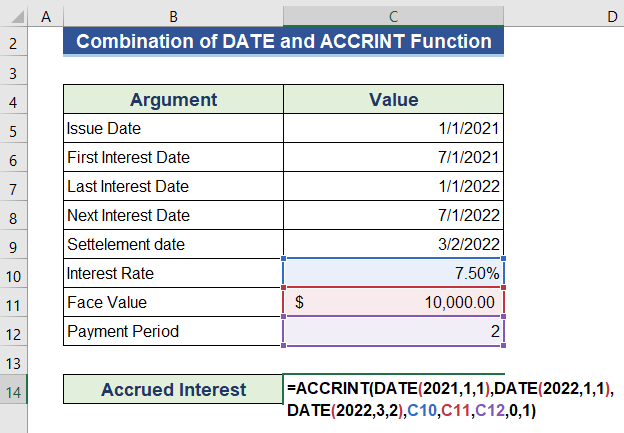
If you're considering high yield bonds as an investment, you probably have questions about what to look out for. After all, high yield bonds are not for the faint of heart. We'll be discussing Interest rates, Credit ratings and other common characteristics. Before we get into the details, let's look at some common characteristics of high-yield bonds. If you're still confused, read on for some helpful tips.
Interest rates
High yield refers to a bond's higher yield. High yield bonds usually have a shorter maturity, around 10 years. They can also be calledable, which means the issuer could choose to repurchase them at a later time. These bonds tend to be more volatile that other types of bonds. Prices respond more strongly than daily fluctuations in interest rates to changes in economic and corporate earnings. Hence, investors may find that high yield bonds tend to perform better than other classes of fixed income.
Because of the higher yield, high yield bonds are more risky than investment-grade bonds. A lower credit score means they are more vulnerable to default and the price falls. This is why they are charged higher interest rates. High-yield bonds are often issued by small, capital-intensive, startups. Some even fall angels, which is a term that refers to people with poor credit ratings. High-yield bonds have risks, which investors should not underestimate.

Credit ratings
It is not easy to see the cycle of credit ratings for high yield bond bonds. While rising stars are getting attention, it's important to be aware of the market's direction. Rising stars have attracted attention because they can help signal future price support. But, they also tend to be more expensive than their predecessors. Market cycles are influenced by the rise and fall in credit ratings. Rising stars also indicate a higher quality product than it was previously.
High-yield bonds are not considered high-quality investments. They do not have the same credit rating as investment-grade bonds. This makes them less attractive to most investors. The credit rating assigned to them by the rating agency is not fixed and may change depending on the performance of their issuer. This can cause high yield bonds to become investment-grade, or junk, and could result in them becoming less attractive. To avoid such risks, investors should only make investments in high-quality bonds.
Common characteristics
High yield bonds, which are unsecured obligations, have a greater risk of default. High yield bonds are less restrictive than investment grade bonds and can be more flexible than bank loan loans. These covenants are often changed during the marketing process. NerdWallet's scoring formula takes over 15 factors into account when evaluating high yield bonds. Here are some common characteristics for high yield bonds. This article's introductory section will help you understand the basics of high yield bonds.
High yield bonds are able to generate equity-like returns while exposing investors to speculative-grade risk. The high yield market is not as positive as investment-grade bonds or equities. Before investing in this type, investors need to consider the potential risks. However, it's worth noting that this type of debt offers higher yields than treasuries.

Investing in high-yield bonds
You might be tempted to buy high yield bonds if you desire a higher return on your investments. But you should be aware that high yield bonds carry risks. High yield bonds can be risky investments. It is recommended to seek advice from a financial adviser before you invest in them. You should think about your risk tolerance, your time horizon and your current asset allocation before you invest in this type bond.
High-yield bond tend to move in the exact same direction as stocks. They may not be used to diversify stock-heavy portfolios. Additionally, they have lower liquidity levels than investment grade bonds. Furthermore, high yield bonds are more susceptible to credit rating agencies' downgrades, which can impact the bond's worth. It's important to do thorough research on potential investments. Financial advisers can offer guidance.
FAQ
What is the difference in the stock and securities markets?
The entire list of companies listed on a stock exchange to trade shares is known as the securities market. This includes stocks, options, futures, and other financial instruments. Stock markets are generally divided into two main categories: primary market and secondary. Large exchanges like the NYSE (New York Stock Exchange), or NASDAQ (National Association of Securities Dealers Automated Quotations), are primary stock markets. Secondary stock markets let investors trade privately and are smaller than the NYSE (New York Stock Exchange). These include OTC Bulletin Board (Over-the-Counter), Pink Sheets, and Nasdaq SmallCap Market.
Stock markets have a lot of importance because they offer a place for people to buy and trade shares of businesses. Their value is determined by the price at which shares can be traded. Public companies issue new shares. These newly issued shares give investors dividends. Dividends are payments made to shareholders by a corporation.
Stock markets not only provide a marketplace for buyers and sellers but also act as a tool to promote corporate governance. Shareholders elect boards of directors that oversee management. The boards ensure that managers are following ethical business practices. In the event that a board fails to carry out this function, government may intervene and replace the board.
Who can trade in the stock market?
Everyone. But not all people are equal in this world. Some have better skills and knowledge than others. They should be recognized for their efforts.
There are many factors that determine whether someone succeeds, or fails, in trading stocks. For example, if you don't know how to read financial reports, you won't be able to make any decisions based on them.
This is why you should learn how to read reports. Understanding the significance of each number is essential. And you must be able to interpret the numbers correctly.
If you do this, you'll be able to spot trends and patterns in the data. This will assist you in deciding when to buy or sell shares.
You might even make some money if you are fortunate enough.
How does the stockmarket work?
By buying shares of stock, you're purchasing ownership rights in a part of the company. A shareholder has certain rights. He/she can vote on major policies and resolutions. The company can be sued for damages. He/she may also sue for breach of contract.
A company cannot issue shares that are greater than its total assets minus its liabilities. This is called capital sufficiency.
A company with a high capital adequacy ratio is considered safe. Low ratios can be risky investments.
How can someone lose money in stock markets?
The stock market does not allow you to make money by selling high or buying low. You lose money when you buy high and sell low.
The stock market is an arena for people who are willing to take on risks. They would like to purchase stocks at low prices, and then sell them at higher prices.
They are hoping to benefit from the market's downs and ups. They might lose everything if they don’t pay attention.
What Is a Stock Exchange?
Stock exchanges are where companies can sell shares of their company. This allows investors to buy into the company. The market sets the price for a share. It is typically determined by the willingness of people to pay for the shares.
The stock exchange also helps companies raise money from investors. Investors are willing to invest capital in order for companies to grow. Investors purchase shares in the company. Companies use their money as capital to expand and fund their businesses.
A stock exchange can have many different types of shares. Some shares are known as ordinary shares. These shares are the most widely traded. Ordinary shares are bought and sold in the open market. Prices for shares are determined by supply/demand.
Preferred shares and debt security are two other types of shares. When dividends are paid out, preferred shares have priority above other shares. The bonds issued by the company are called debt securities and must be repaid.
Statistics
- Individuals with very limited financial experience are either terrified by horror stories of average investors losing 50% of their portfolio value or are beguiled by "hot tips" that bear the promise of huge rewards but seldom pay off. (investopedia.com)
- The S&P 500 has grown about 10.5% per year since its establishment in the 1920s. (investopedia.com)
- Even if you find talent for trading stocks, allocating more than 10% of your portfolio to an individual stock can expose your savings to too much volatility. (nerdwallet.com)
- Ratchet down that 10% if you don't yet have a healthy emergency fund and 10% to 15% of your income funneled into a retirement savings account. (nerdwallet.com)
External Links
How To
How to create a trading strategy
A trading plan helps you manage your money effectively. It will help you determine how much money is available and your goals.
Before setting up a trading plan, you should consider what you want to achieve. You may want to save money or earn interest. Or, you might just wish to spend less. If you're saving money, you might decide to invest in shares or bonds. You can save interest by buying a house or opening a savings account. If you are looking to spend less, you might be tempted to take a vacation or purchase something for yourself.
Once you have an idea of your goals for your money, you can calculate how much money you will need to get there. This depends on where your home is and whether you have loans or other debts. Also, consider how much money you make each month (or week). Income is what you get after taxes.
Next, you'll need to save enough money to cover your expenses. These include bills, rent, food, travel costs, and anything else you need to pay. These all add up to your monthly expense.
You will need to calculate how much money you have left at the end each month. This is your net disposable income.
This information will help you make smarter decisions about how you spend your money.
Download one online to get started. You could also ask someone who is familiar with investing to guide you in building one.
Here's an example of a simple Excel spreadsheet that you can open in Microsoft Excel.
This is a summary of all your income so far. You will notice that this includes your current balance in the bank and your investment portfolio.
Here's an additional example. A financial planner has designed this one.
It shows you how to calculate the amount of risk you can afford to take.
Remember, you can't predict the future. Instead, focus on using your money wisely today.